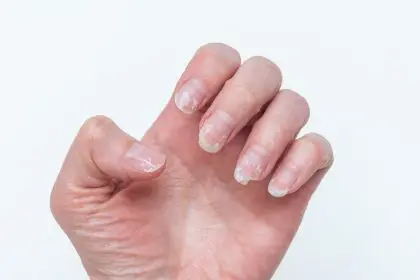Flat feet — also known as fallen arches — is a common condition where the arches of the feet are lower or non-existent. This condition can lead to various issues, including discomfort, pain and potential long-term complications. Understanding how to manage flat feet effectively can significantly improve your quality of life.
Understanding flat feet
Flat feet occur when the arch of the foot collapses, causing the entire sole to come into complete or near-complete contact with the ground. While some people are born with flat feet, others may develop the condition over time due to factors such as aging, injury or obesity.
Common symptoms
Flat feet can present with several symptoms, including:
- Foot pain: Often localized around the arch or heel.
- Swelling: Swelling along the inside of the ankle can occur.
- Fatigue: The feet may tire easily after physical activity.
- Back and leg pain: Misalignment caused by flat feet can lead to pain in the lower back, hips and legs.
Identifying these symptoms early is crucial in managing the condition effectively.
Causes and risk factors
Flat feet can result from a variety of causes, including:
- Genetics: Flat feet can run in families, making it a hereditary condition.
- Injury: Damage to the foot or ankle — including sprains or fractures — can lead to flat feet.
- Arthritis: Rheumatoid arthritis and other inflammatory conditions can weaken the tendons and ligaments that support the arch.
- Obesity: Excess weight puts additional pressure on the feet, contributing to the development of flat feet.
- Aging: Over time, the tendons and ligaments in the foot can weaken, leading to a loss of arch height.
Understanding these causes and risk factors can help you take proactive steps to manage flat feet.
Effective ways to manage flat feet
Managing flat feet involves a combination of lifestyle changes, exercises and supportive footwear. Here are some of the most effective strategies:
Choose the right footwear
Wearing supportive shoes is one of the most critical steps in managing flat feet. Look for shoes that offer:
- Arch support: This helps maintain the natural shape of the foot and reduces strain.
- Cushioning: Proper cushioning can absorb shock and reduce impact on the feet.
- Stability: Shoes with good stability prevent overpronation, a common issue for those with flat feet.
Investing in high-quality footwear can significantly alleviate the discomfort associated with flat feet.
Incorporate foot exercises
Regular exercises can strengthen the muscles and tendons in the feet, improving arch support and reducing symptoms. Some beneficial exercises include:
- Toe curls: Sit with your feet flat on the floor and curl your toes inward, holding for a few seconds before releasing.
- Heel stretches: Stand with your hands against a wall, one foot in front of the other. Gently lean forward, stretching the calf of the back leg.
- Arch lifts: While seated, press your toes into the floor and try to lift the arch without moving the rest of your foot.
Incorporating these exercises into your daily routine can help manage flat feet effectively.
Consider orthotic inserts
Orthotic inserts are custom-made or over-the-counter devices that provide additional support to the arches. They can be placed inside your shoes to help:
- Redistribute weight: Orthotics ensure that weight is evenly distributed across the foot.
- Reduce pain: By supporting the arch, orthotics can alleviate pain and discomfort.
- Improve posture: Proper support can correct alignment issues, reducing strain on other parts of the body.
Consulting with a podiatrist can help you determine the best orthotics for your needs.
Maintain a healthy weight
Excess weight can exacerbate the symptoms of flat feet by placing additional pressure on the arches. Maintaining a healthy weight through a balanced diet and regular exercise can:
- Reduce strain on the feet: Less weight means less pressure on the arches.
- Improve overall mobility: A healthy weight contributes to better movement and reduced pain.
- Enhance quality of life: Staying active and maintaining a healthy weight can help you manage flat feet more effectively.
Taking steps to control your weight is essential in managing flat feet long-term.
Consult with a health care professional
If you’re experiencing significant pain or discomfort, it’s important to consult with a health care professional, such as a podiatrist or orthopedic specialist. They can provide:
- Diagnosis: A thorough examination to confirm the presence of flat feet and any related conditions.
- Treatment plan: Personalized recommendations for managing your symptoms, including physical therapy, medication or surgery if necessary.
- Ongoing support: Regular checkups to monitor your condition and adjust your treatment plan as needed.
Working with a health care professional ensures that you receive the best possible care for your flat feet.
Emotional impact of flat feet
Living with flat feet can sometimes take an emotional toll, especially if the condition limits your ability to engage in activities you enjoy. It’s essential to recognize the emotional aspects of managing flat feet and take steps to address them:
- Acceptance: Understanding that flat feet are manageable can help reduce anxiety and frustration.
- Support networks: Connecting with others who have flat feet — whether through online forums or local support groups — can provide valuable encouragement and advice.
- Positive mindset: Focusing on the steps you can take to manage your condition — rather than dwelling on limitations — can improve your overall well-being.
Addressing the emotional side of flat feet is just as important as managing the physical symptoms.
Long-term considerations
Flat feet are a lifelong condition, but with the right management strategies, you can lead a healthy, active life. Some long-term considerations include:
- Regular monitoring: Keep track of any changes in your symptoms and consult with a health care professional if you notice worsening pain or discomfort.
- Continued use of orthotics: If you use orthotic inserts, be sure to replace them as needed to ensure they continue to provide adequate support.
- Lifestyle adjustments: As you age, you may need to make further adjustments to your footwear, exercise routine and weight management strategies to keep your flat feet under control.
By staying proactive, you can minimize the impact of flat feet on your daily life.
Managing flat feet
Flat feet may be a common condition, but it doesn’t have to define your life. By understanding the causes and symptoms, choosing the right footwear, incorporating foot exercises, using orthotic inserts, maintaining a healthy weight and consulting with a health care professional, you can effectively manage your flat feet and live a comfortable, active life. Remember to address the emotional aspects of the condition as well, ensuring that you approach your flat feet with a positive mindset. With the right care and attention, flat feet can be managed successfully, allowing you to focus on the activities you enjoy without pain or discomfort.
This story was created using AI technology.












